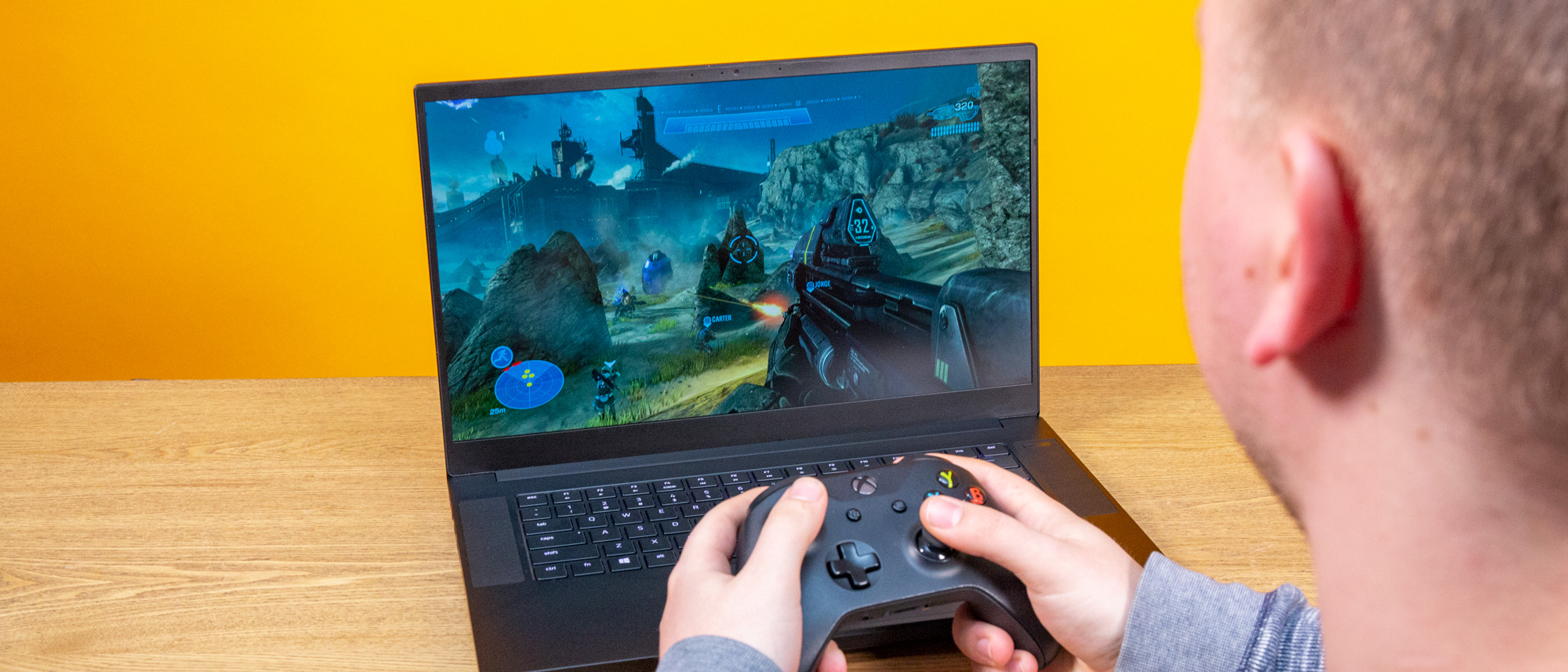Laptop Mag Verdict
Razer's Blade 15 Base Model offers strong performance and long battery life in a premium, attractive chassis.
Pros
- +
Attractive aluminum chassis
- +
Thin display bezels
- +
Impressive battery life
- +
Strong overall performance
- +
Lots of ports
Cons
- -
Keyboard is only single-zone RGB
- -
Runs hot
- -
A bit pricey
Why you can trust Laptop Mag
The Razer Blade 15 was one of the best gaming laptops of last year. When it first released, the Blade 15 was available with an Nvidia RTX 2060 GPU and up. A few months later, Razer created a more affordable version called the Razer Blade 15 Base Model. This version costs considerably less than the Advanced model and packs a GTX 1660 Ti GPU.
Most of the things we loved about the pricier model found their way to this base edition, including the Blade 15's attractive, unibody aluminum design and long battery life. Performance is also great despite the lesser GPU, and you even get an Ethernet port on the cheaper model. We just wish the Blade 15's 1080p, 144Hz display were brighter and that the laptop didn't get so hot when gaming.
Pricing and configurations
The Razer Blade 15 comes in Base and Advanced models.
Starting at $1,599, the cheapest Blade 15 Base Model sports a 60Hz display, a 9th Gen Core i7-9750H CPU, 16GB of RAM, dual 128GB SSDs and 1TB HDD hard drives, and an Nvidia GeForce GTX 1660 Ti graphics card.

Our $1,799 review unit packs the same specs but has a 144Hz display and upgrades the SSD to 256GB. From there, you can upgrade to an RTX 2060 GPU and a 512GB SSD for $1,899. The price jumps to $2,099 when you bump the GPU up to an RTX 2070 Max-Q.
The most beastly configuration comes with a 4K OLED display, a 9th Gen Core i7 CPU, 16GB of RAM, a 512GB SSD and GeForce RTX 2080 Max-Q graphics. Look away if you're on a budget because that configuration goes for $3,299.
Design
You couldn't mistake the Blade 15 for anything but a Razer laptop. This base version is a tad chunkier but shares the same DNA as the company's other notebooks.
Sign up to receive The Snapshot, a free special dispatch from Laptop Mag, in your inbox.
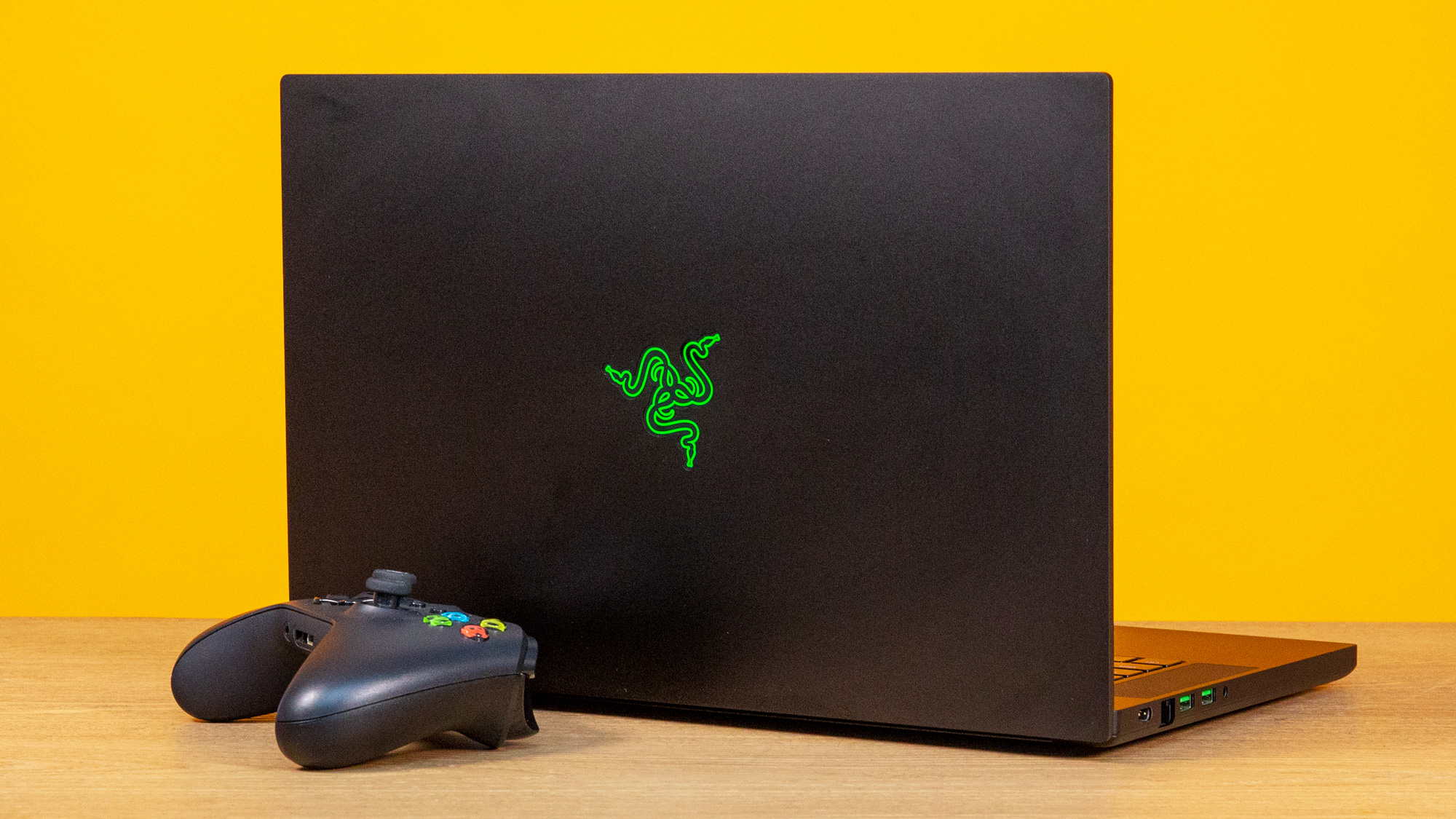
Those distinctly Razer design elements include a black metal chassis, a large touchpad and top-firing speakers. Standing out against the lid's black surfaces is the instantly recognizable three-headed serpent of the Razer logo.
I hate to draw too many comparisons to the MacBook Pro but Apple users will feel right at home with the Blade 15's unibody metal chassis and its minimalist design. I've always loved the look of Razer's laptops, so I'm glad this lower-cost version of the Blade 15 retains that same clean aesthetic.
At 5 pounds and 14 x 9.3 x 0.8 inches, the base model Blade 15 is a tad thicker than the Advanced model (0.7 inches thick). The HP Omen 15 (14.2 x 10.2 x 0.8 inches, 5.4 pounds) is a bit larger and heavier than the Razer 15, while the Asus ROG Zephyrus G GA502 (14.2 x 9.9 x 0.8, 4.5 pounds) has a bigger footprint but weighs less.
Ports
The Razer Blade 15 Base Model has all the ports you need for gaming on the go or at home.
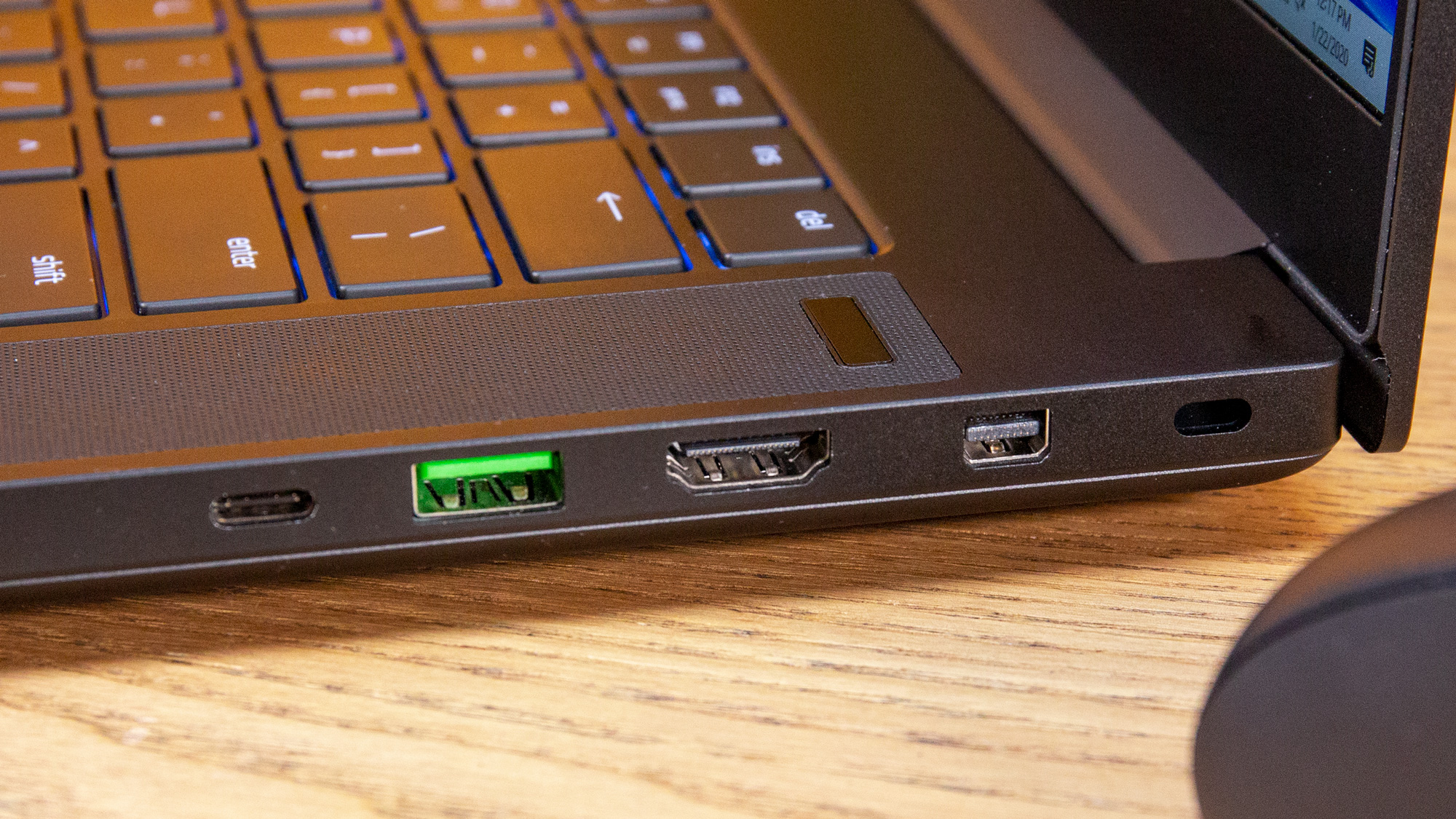
On the right side of the laptop is a Thunderbolt 3 port for connecting to multiple 4K monitors or fast-charging peripherals. Alongside the USB-C connection are a USB 3.1 Type-A port, an HDMI 2.0 input, a Mini DisplayPort 1.4 and a Kensington lock slot.

Peek at the left side of the Blade 15 and you'll find two additional USB 3.1 Type-A ports and a headphone/mic jack. There is even an Ethernet port on the base model to ensure a fast, stable connection when you're playing online.
Display
There are two display options available on the Razer Blade 15 Base Model. Our review unit came equipped with a 15.6-inch, 1080p panel with a 144Hz refresh rate. There is also a 60Hz display option for those who don't play fast-paced games.

The 144Hz refresh rate panel was vivid but not superbright. The panel was sharp enough that I could see every curl in Matthew McConaughey's signature wavy hairstyle in The Gentleman trailer. Colors were also pretty vivid; ultraviolet lighting in an indoor garden was a saturated shade of eggplant purple. It's a shame those vibrant colors don't reach their full potential because of the Blade 15's below-average brightness.
The lowish brightness wasn't a problem in Hitman 2's sunny Miami setting. Again, the panel was detailed enough that I could clearly see the bar code tattooed on the back of Agent 47's bald head. The grandstand in the auto race mission was a pleasant turquoise tone and the rich shades of red and blue on the flags held by French, Danish and Swedish fans stood out against the gray backdrop of the track. If the panel was just a tad brighter those colors would really have popped.
According to our colorimeter, the Razer Blade 15 Base Model's display covers 107% of the sRGB color gamut, making it more colorful than the displays on the Omen 15 (102%), ROG Zephyrus G GA502 (71 fps) and the category average (109%).
The Blade 15's display reached only 275 nits of brightness, which makes it much dimmer than the panels on the Omen 15 (320 nits) and the category average (279 nits). The Razer at least outshined the ROG Zephyrus G GA502 (240 nits), which we criticized for being too dim.
Keyboard and touchpad
The Blade 15's chiclet-style backlit keyboard is decent, but I would prefer to use a mechanical keyboard when gaming. For a laptop this thick, the keys are actually quite shallow. That usually results in a poor typing experience, ,but these keys are actually pretty bouncy and don't require much force to actuate. I'm not as crazy about RGB as my colleagues but I expect more than single-zone lighting at this price.
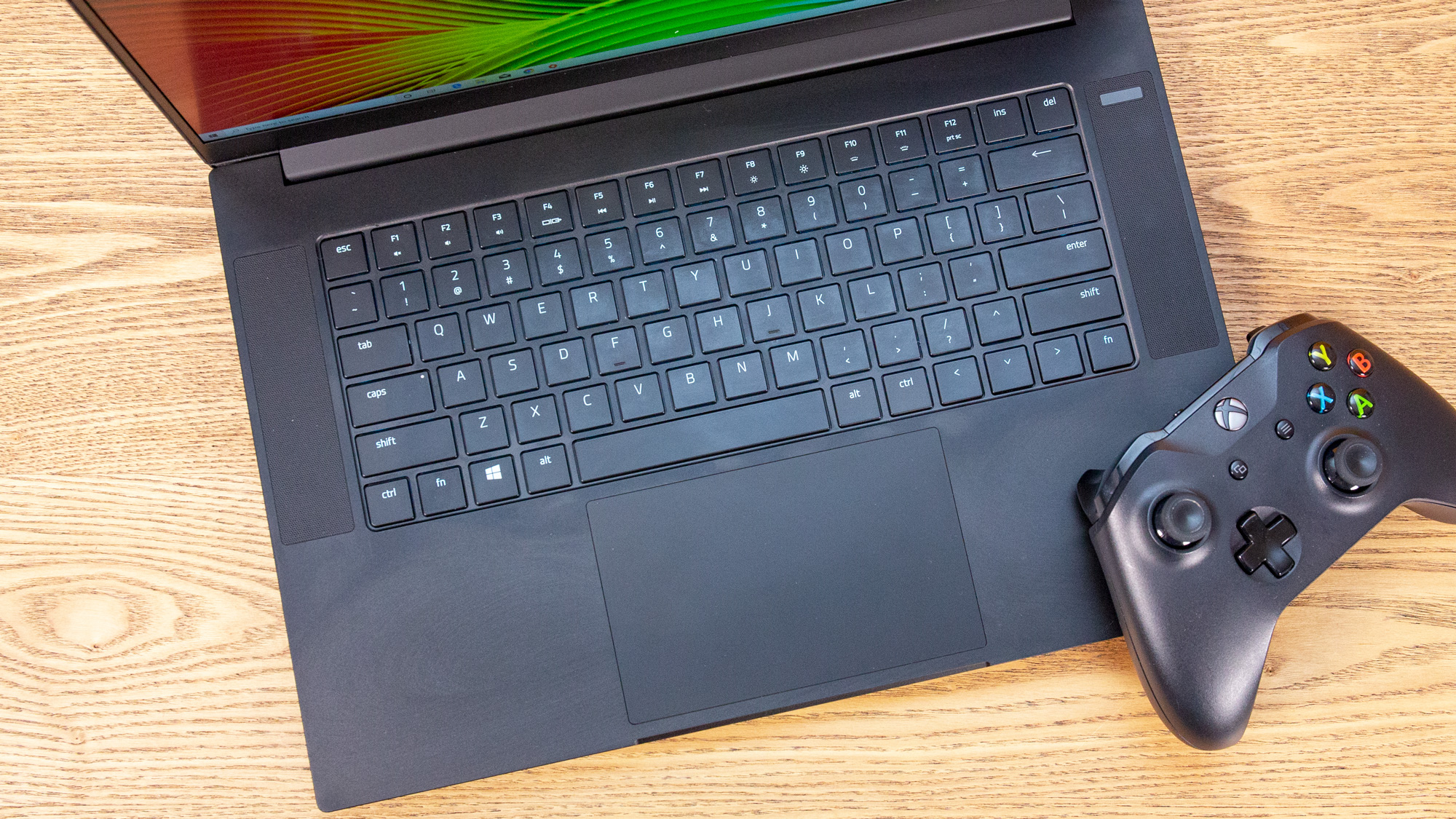
I typed at 123 words per minute with an accuracy rate of 95% on the 10fastfingers.com typing test, which is faster than my 119-wpm average.
If you thought only Apple makes a good touchpad, think again. The Blade 15's massive 5.1 x 3.1-inch touchpad is smooth and responsive. My fingertips enjoyed gliding off the plush surface as I easily executed Windows 10 gestures, including pinch-to-zoom and three-finger swipes to switch between open windows.
Audio
I'm really impressed with the dual top-firing speakers on the Blade 15's deck.
In Hitman 2, I could hear race cars humming around a track as I hid in a filthy, fly-infested dumpster waiting for my pursuers to give up their search. The speakers were clear enough that I could hear the charter of bystanders through the ringing gunshots fired toward me after I mistimed my escape.
The speakers did a good job of capturing the airy, dream-like quality of Brandon Flower's "Between Me and You." Piano chords were crisp and Flowers' voice was front-and-center. The speakers did a good job filing a medium-size room, but bass thuds in Glass Animals' "Pork Soda" were weak.
Gaming, graphics and VR
Packing an Nvidia GeForce GTX 1660 Ti GPU with 6GB of VRAM, the Blade 15 can play most modern games on high settings without dropping below our 30 frames per second threshold. I fired up Hitman 2 and enjoyed between 65 fps and 80 fps as I snuck around police officers and eliminated targets.
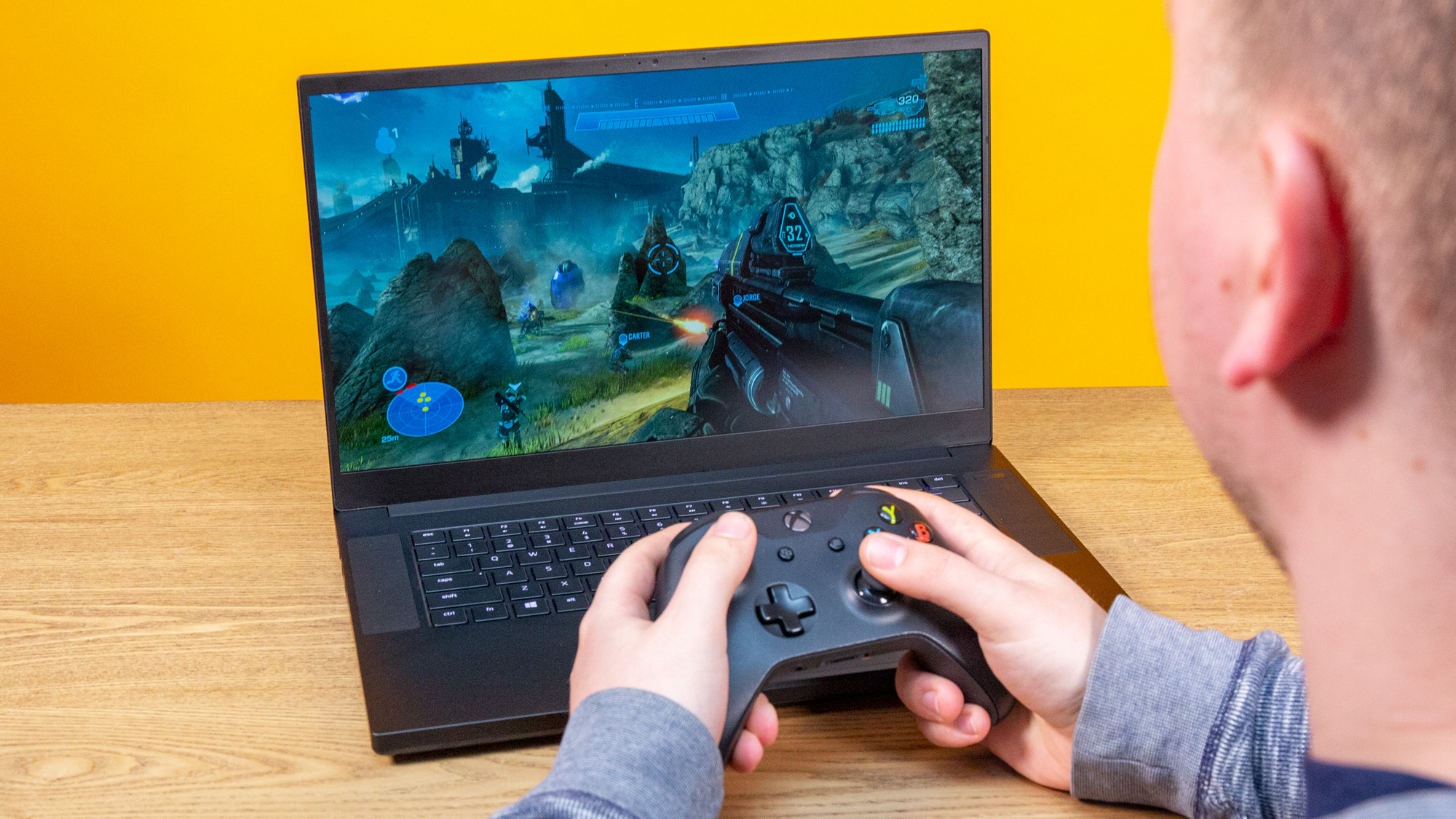
The Razer Blade 15 consistently outperformed rival laptops equipped with the same graphics card on our benchmark tests. The Blade 15 ran Rise of the Tomb Raider (1080p on Very High) at 46 fps, which tops the Omen 15 (44 fps, GTX 1660 Ti) and the Asus ROG Zephyrus G GA502 (43 fps, GTX 1660 Ti) but not the mainstream gaming average (48 fps).
We saw similar results on the Hitman test in which the Blade 15 notched 80 fps, whereas the Omen 15 (78 fps) and ROG Zephyrus G GA502 (73 fps) didn't come close to that mark. Again, the gaming average (84 fps) edged out those laptops.
The Blade 15 also did a good job on the Grand Theft Auto V benchmark, powering the popular game at a steady 64 fps. Again, the competition failed to match the Razer, although the Omen 15 (60 fps), ROG Zephyrus G GA502 (57 fps) and the gaming average (59 fps) put in decent results.
Metro: Last Light is a demanding game, but the Razer Blade 15 Base Model played the post-apocalyptic first-person shooter at 55 fps, beating the Omen 15 (40 fps) and the category average (40 fps).
Performance
When you're not in a gaming mood, the Blade 15 has no problem running an everyday workload. I didn't notice any slowdown when I opened 20 Google Chrome tabs on the Blade 15. The laptop was quick to load web pages even when there were four 1080p YouTube videos running in the background and multiple video game streams on Mixer and Twitch.
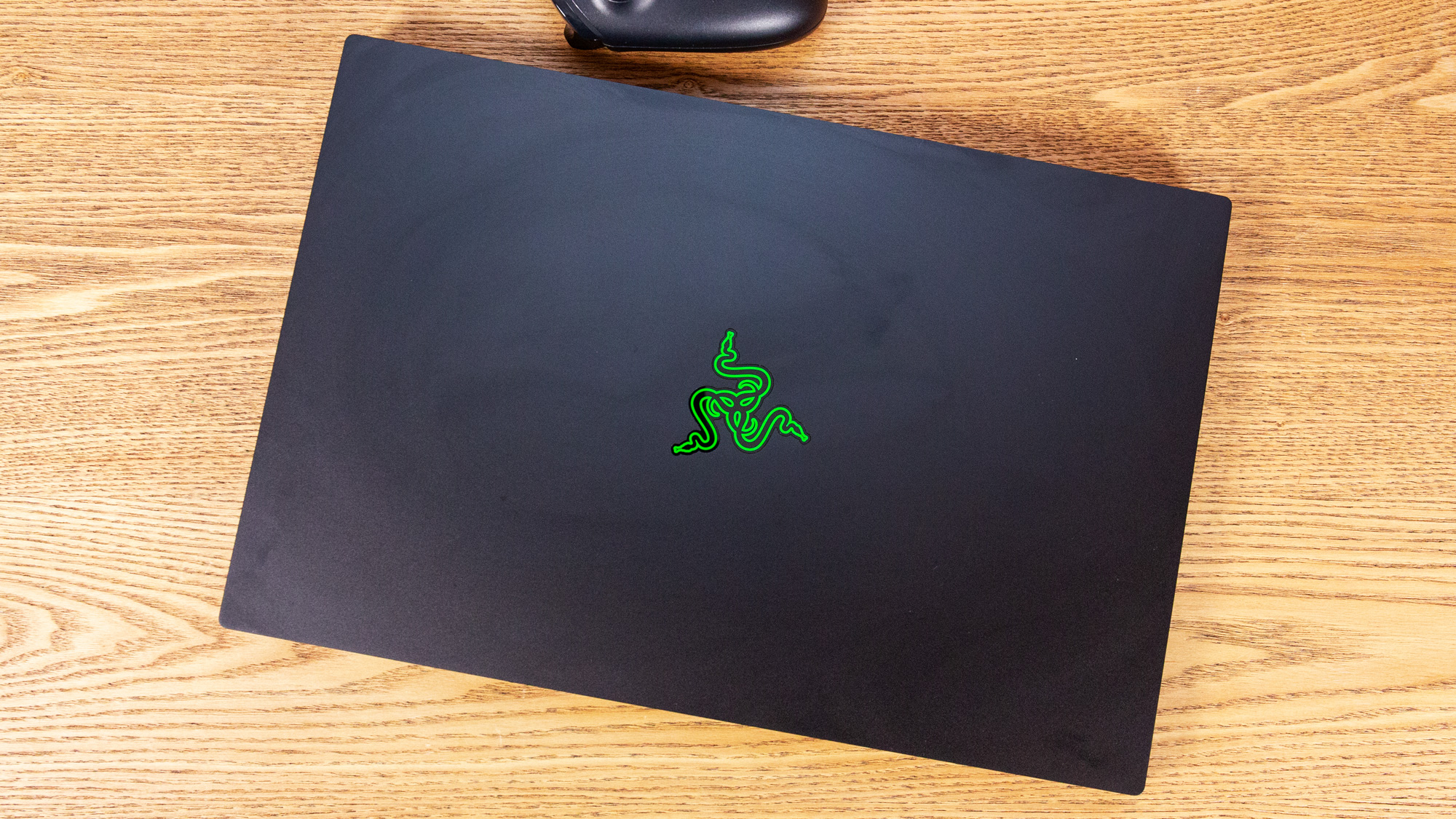
Packing a Core i7-9750U CPU and 16GB of RAM, the Blade 15 Base Model did a good job on our performance benchmarks, notching an 19,542 on the Geekbench 4.3 test. HP's Omen 15 (19,956, Core i7-9750H) did better on this particular benchmark and the Razer couldn't match the mainstream gaming category average (20,284). On a positive note, the Blade 15 crushed the AMD-powered ROG Zephyrus G GA502 (14,106, Ryzen 7 3750H).
It took the Blade 15 only 10 minutes and 47 seconds to convert a 4K video to 1080p resolution using the Handbrake app. The Omen 15 (12:34) and the ROG Zephyrus G GA502 (14:23) needed more time to complete the same task, as did the average mainstream laptop (10:51).
Our Blade 15 review unit came with a 256GB PCIe SSD and a 1TB, 5,400-rpm HDD. That SSD duplicated 4.97GB of multimedia files in just 9 seconds at a rate of 565.5 MBps. That comes short of the speed of the Omen 15's 512GB M.2 PCIe NVMe SSD (728.3 MBps) but outraces the storage in the ROG Zephyrus G GA 502 (424 MBps) and the average mainstream gaming laptop (466 MBps).
Battery Life
With a runtime of 5 hours and 48 minutes on our battery test (continuous web surfing over Wi-Fi at 150 nits), the Razer Blade 15 Base Model has great endurance for a gaming laptop. Competing laptops with GTX 1660 Ti graphics, like the Omen 15 (3:05) or the ROG Zephyrus G GA502 (4:48), will power down long before the Blade 15. Razer's laptop even tops the mainstream gaming category average (4:01) by more than an hour.
Heat
The Razer 15's metal chassis got warm in our everyday heat testing and downright scalding when we played Hitman 2 on High graphics settings.
The bottom of the laptop reached 102 degrees Fahrenheit and the center of the keyboard hit 98 degrees after we watched a 15-minute video in full-screen mode. With that result, the Razer Blade 15 topped our 95-degree comfort threshold even before our gaming tests. If it's any consolation, the touchpad was only warm to the touch, at 88 degrees.
I had to remove the Razer Blade 15 from my laptop after playing Hitman 2 for 15 minutes. The underside of the laptop near the hinge reached a blistering 132 degrees while the center of the keyboard (117 degrees) and the touchpad (98 degrees) were also warm to the touch.
Webcam
I'm glad Razer found a way to put a webcam on the Blade 15's top display bezel, but the quality of the camera is pretty lackluster. A selfie I shot in our dimly lit office was blotchy. The edges of the photo looked smeared and my face could be confused for a watercolor painting. On a positive note, the lens didn't overexpose the lights hanging above me and the colors were pretty accurate.
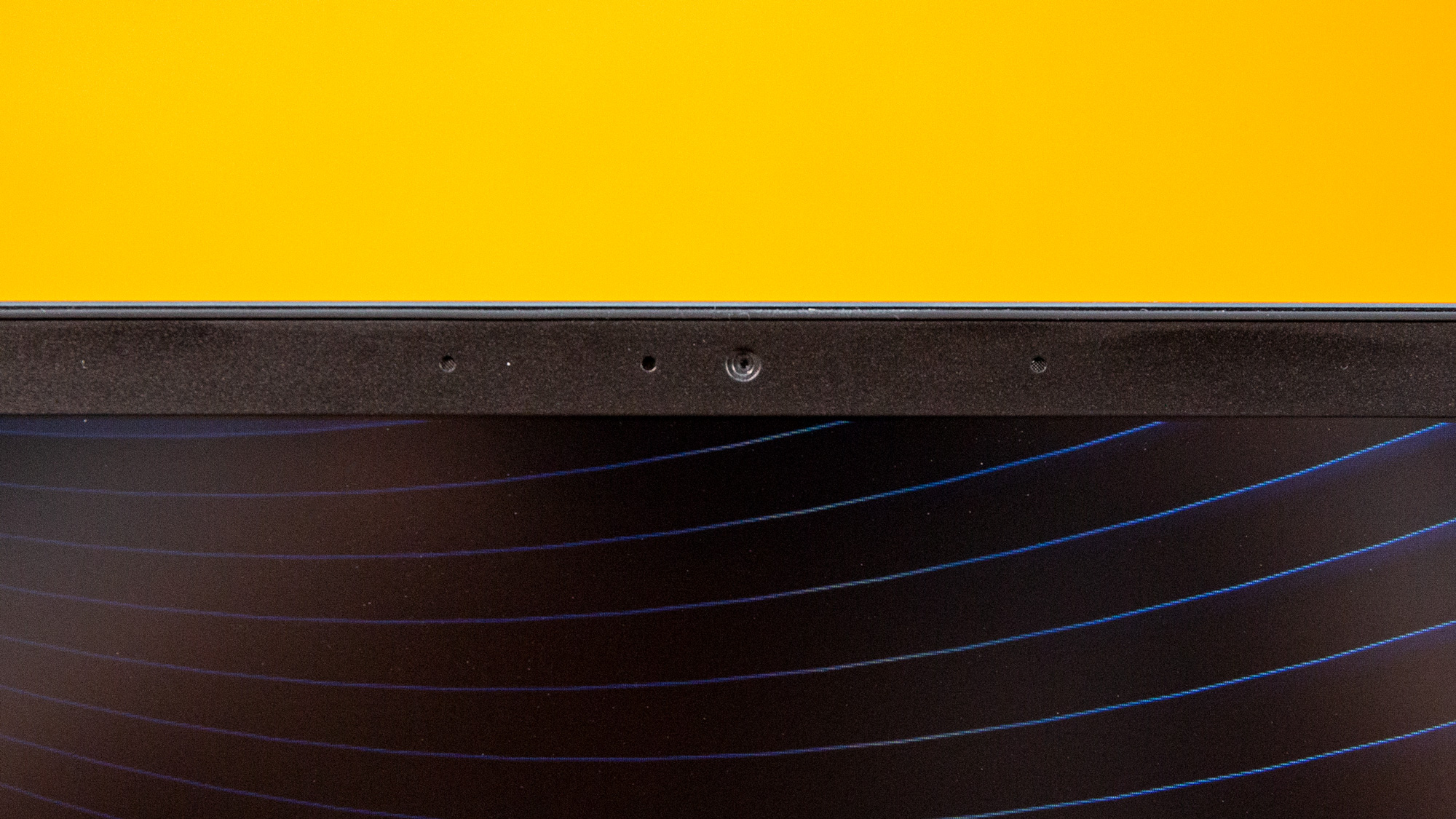
You could use the laptop's webcam in a pinch but we recommend buying one of the best external webcams.
Software and warranty
The Blade 15 comes with a pair of gaming-focused programs: Razer Cortex and Razer Synapse. Both apps have gorgeous interfaces and are loaded with useful features.
I spent most of my time in Synapse, which lets you set macros, change keyboard lighting, choose between performance modes and switch the panel between 144Hz and 60Hz refresh rates.
Razer Cortex, a similarly polished app, does everything you'd expect from a system optimization tool, like free up RAM and remove unneeded files. On top of that, a Game Booster mode lets you optimize performance when gaming. Check boxes let you quickly toggle on/off processes, from turning off automatic updates to clearing your clipboard.
Other third-party apps include Dolby Atmos for changing sound profiles and Nvidia's GeForce Experience, a one-stop shop for keeping drivers up-to-date to sharing the content you grab while playing.
The Blade 15 Base Model runs Windows 10 Home. As such, you can find an assortment of bloatware, courtesy of Microsoft. Some apps you'll probably never use include Candy Crush Friends, Farm Heroes Saga and Microsoft Solitaire Collection.
Razer sells the Blade 15 Base Model with a one-year warranty. See how Razer fared in our Best and Worst Brands and Tech Support Showdown special reports.
Bottom Line
The Razer Blade 15 is a very good gaming laptop, but a questionable value when you compare it with competitors. At $1,699, Razer is asking a lot for a laptop with a GTX 1660 Ti graphics. Then again, laptops with better graphics performance at a lower price don't have the same premium build quality or long battery life. If you're willing to exchange unibody aluminum for plastic, then HP's Omen 15 is a good option. You could even get the Lenovo Legion Y740 with an RTX 2060 for about the same price as the Blade 15.
The extra money you spend on the Razer Blade 15 would have been easier to justify if the laptop didn't have such a dim display and didn't run so hot under a heavy workload. Despite those faults, the Razer Blade 15 Base Model is a recommended gaming laptop that packs capable graphics performance in a sleek, attractive package.
Phillip Tracy is the assistant managing editor at Laptop Mag where he reviews laptops, phones and other gadgets while covering the latest industry news. After graduating with a journalism degree from the University of Texas at Austin, Phillip became a tech reporter at the Daily Dot. There, he wrote reviews for a range of gadgets and covered everything from social media trends to cybersecurity. Prior to that, he wrote for RCR Wireless News covering 5G and IoT. When he's not tinkering with devices, you can find Phillip playing video games, reading, traveling or watching soccer.
